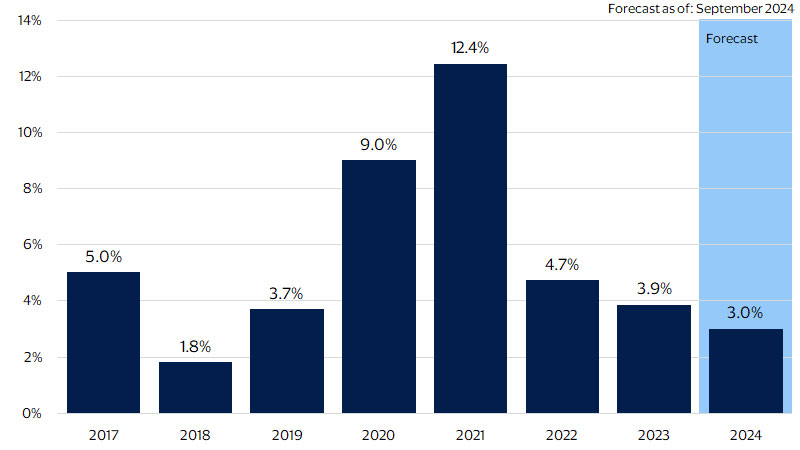Consumers may face headwinds this holiday season


October 2024 – Consumers have shown some semblance of spending strength in recent months, but several factors may dampen their willingness to spend this holiday season. While inflation continues to abate, the price level of many holiday purchases—both goods and services—remains elevated compared to the past several years. The Conference Board’s Consumer Confidence Index has shown overall consumer confidence improving, but it has certainly not been strong enough throughout 2024 to portend a breakout in holiday spending.
Waning confidence in the labor market, both at present and (possibly more importantly) in the future may also push some consumers to curtail their holiday spending due to job loss concerns (refer to fig. 1 in full report). Additionally, while an increasing percentage of consumers expect their family financial situation to improve in the coming six months, those who see their present family financial situation as bad has also been increasing in recent months—nearly to the same level as consumers who see it as good.
Bracing for holiday headwinds
Sales looking a little less holly jolly this year

Holiday retail spending,* Nov-Dec
Non-seasonally adjusted, sales excluding autos, gas and restaurants; year-over-year percent change

* We define holiday sales as non-seasonally adjusted nominal retail sales on all forms of payment less sales at automotive dealers, gas stations and restaurants for the months of November and December as reported by the U.S. Department of Commerce.
Forward-Looking Statements
This report may contain forward-looking statements within the meaning of the U.S. Private Securities Litigation Reform Act of 1995. These statements are generally identified by words such as “outlook”, “forecast”, “projected”, “could”, “expects”, “will” and other similar expressions. Examples of such forward-looking statements include, but are not limited to, statements we make about Visa’s business, economic outlooks, population expansion and analyses. All statements other than statements of historical fact could be forward-looking statements, which speak only as of the date they are made, are not guarantees of future performance and are subject to certain risks, uncertainties and other factors, many of which are beyond our control and are difficult to predict. We describe risks and uncertainties that could cause actual results to differ materially from those expressed in, or implied by, any of these forward-looking statements in our filings with the SEC. Except as required by law, we do not intend to update or revise any forward-looking statements as a result of new information, future events or otherwise.
Disclaimers
The views, opinions, and/or estimates, as the case may be (“views”), expressed herein are those of the Visa Business and Economic Insights team and do not necessarily reflect those of Visa executive management or other Visa employees and affiliates. This presentation and content, including estimated economic forecasts, statistics, and indexes are intended for informational purposes only and should not be relied upon for operational, marketing, legal, technical, tax, financial or other advice and do not in any way reflect actual or forecasted Visa operational or financial performance. Visa neither makes any warranty or representation as to the completeness or accuracy of the views contained herein, nor assumes any liability or responsibility that may result from reliance on such views. These views are often based on current market conditions and are subject to change without notice.
Visa’s team of economists provide business and economic insights with up-to-date analysis on the latest trends in consumer spending and payments. Sign up today to receive their regular updates automatically via email.